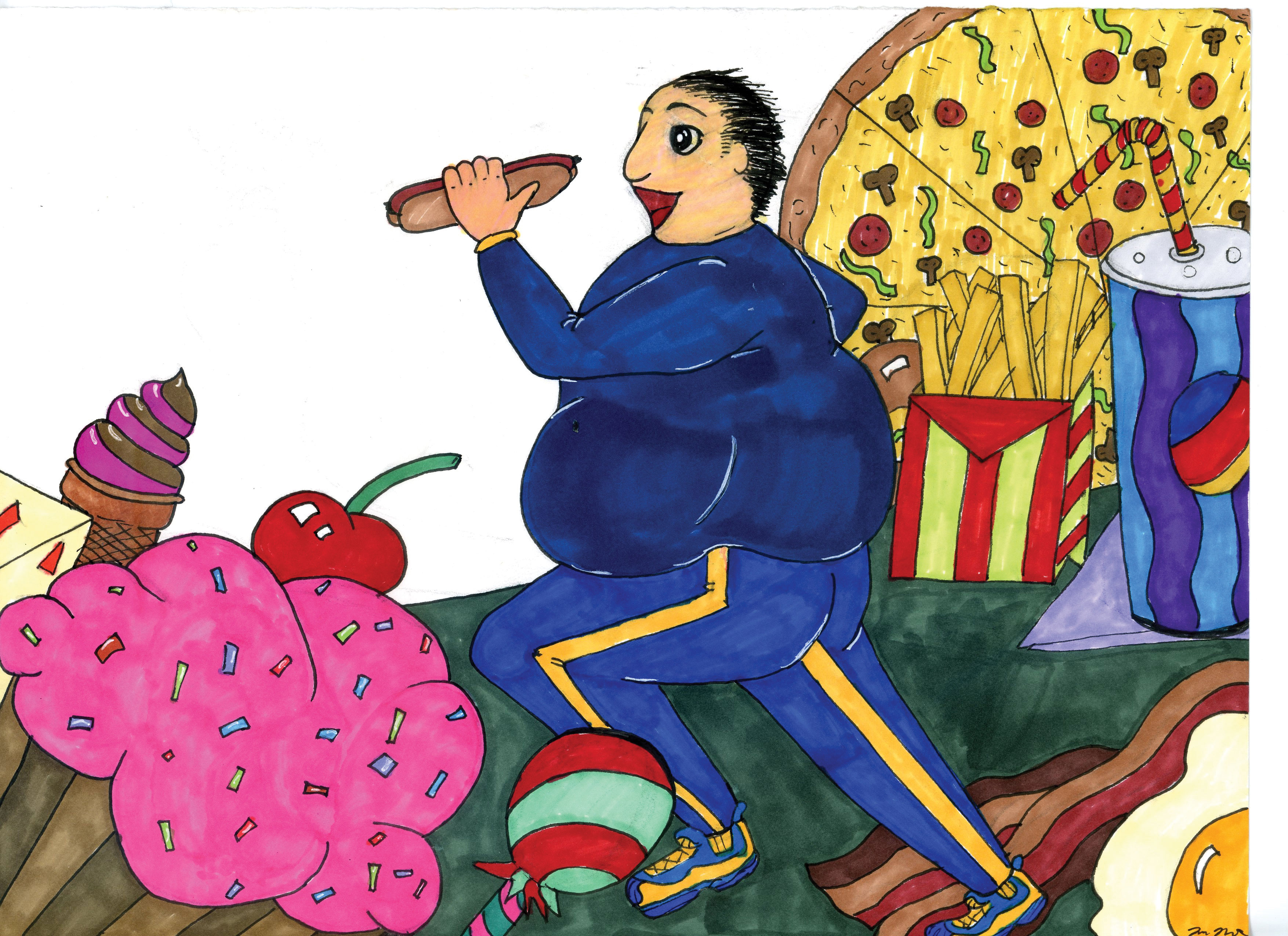Made-to-order omelets, juicy servings of steak and even cheesecake are just the tip of the iceberg when it comes to the UCLA dining halls. The selection of food is magnificent, and it all tastes great to boot. Such irresistible food generally comes at a price, be it a new set of love handles or a dreaded double chin.
UCLA tries to help students stave off the dreaded “freshman 15″ through the Wooden Center, exercise groups and even nutrition information posted in the dorms. Unfortunately, most of the university’s efforts are undermined by the swipe-per-meal system.
Overeating and wastefulness are the most significant impacts of this system. The dining hall exits often have depressing images, with half-eaten plates of food and full glasses of soda littering the tray racks.
Students certainly hold most of the blame for overeating and wastefulness. The university actively tries to stop both from occurring. But as long as the swipe plan remains in place, both UCLA’s and the students’ efforts will be like trying to run up an escalator that is going down.
I propose that UCLA follow UC Irvine’s lead. The university offers both the traditional meal plans as well as points that can be used to purchase individual dishes.
In such a system, each dish is worth a certain amount of points, and students have a large but finite pool of points to use for the academic year. This forces students to really think about what they want to eat and how much of it.
UCLA could offer both the traditional meal plans and pay-per-dish plans, offering the best of both worlds.
According to Dan Les, director of Budget & Financial Planning for Housing & Hospitality Services, the purpose of UCLA’s current meal swipe system is to bring the housing community together.
“A system like UC Irvine’s, from my perspective, separates the haves and the have-nots,” Les said. “Some people will be eating steak every day, and others will be forced to eat cereal.”
Les’ concerns regarding a pay-per-dish plan are warranted, but if UCLA genuinely wants its students to have the best dining experience possible, the flexibility allowed by UC Irvine’s pay-per-dish plan would be useful to students who don’t fit into the five neat categories of meal plans.
As it stands now, students who have the 11 meal plan are sometimes forced to gorge themselves in one sitting in order to have enough meals in the week, especially if they don’t go home for the weekend.
If students eat three meals a day, they will only have two meals left by Thursday morning. Even students with the 14 plan will run out of swipes if they make frequent trips to Bruin Café and Café 1919.
The prospect of eating an unlimited amount of food for one set price is certainly alluring, but it allows us to indulge far too easily. Resisting the dining hall’s surprisingly well-made desserts is no easy feat, and implementing a pay-per-dish plan will ensure that those who gain the freshman 15 can’t blame the dining halls for it.
When asked what he thought about the overeating and waste generated in the dining hall, Les said the ideas were foreign to him. For Les, instituting a system like UC Irvine’s would require more human labor to man the various swiping stations.
Les also said that dining services is always keeping its ear to the ground for concerns students have, as evidenced by the weekly meetings it has with the student government.
It certainly wouldn’t be easy overhauling the structure of UCLA’s meal plans. But then again, with Pauley Pavilion under construction and multiple new residence halls being built, now may be a better time than ever. The 2,500 additional students in the new buildings would certainly appreciate more choices in their meal plans.
No one can say that UCLA has poor dining hall facilities. UCLA’s on-campus dining ranks higher than that of Harvard University and Princeton University, according to College Prowler. Simply put, we’re spoiled with gourmet dishes for three meals a day.
Despite this, the meal plan system still needs an overhaul.
As long as the university handles a pay-per-dish plan as deftly as it handles the actual food served, waste will be reduced, overeating will be less likely, and students will be allowed much more flexibility in their diets and eating habits.
